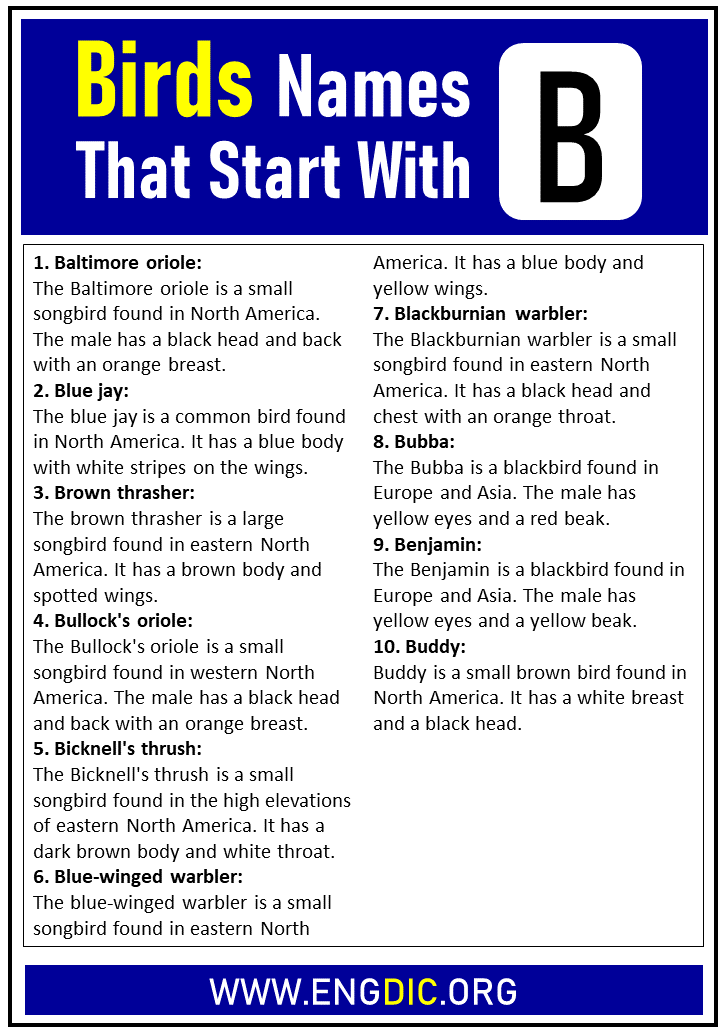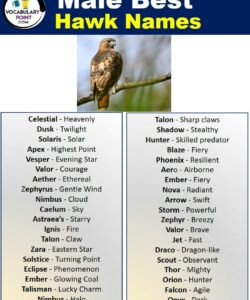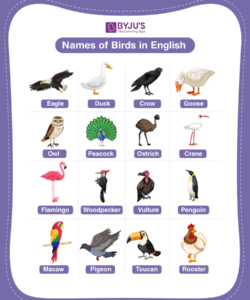Are you fascinated by the avian world and eager to expand your knowledge about birds whose names begin with the letter “B”? Dive into this comprehensive article, where we unveil a diverse array of bird species that share this alphabetical distinction. Discover their unique characteristics, habitats, and captivating behaviors, expanding your ornithological horizons.
We have curated a comprehensive list of “bird names that start with b” to guide your search. From the petite and vibrant Baltimore Oriole to the majestic Bald Eagle, each bird featured in this article holds a special place in the ecological tapestry. Get ready to embark on a fascinating journey into the realm of birds, starting with the letter “B”.
Birds of the Blue: Azure and Blue Birds
Azure birds captivate with their vibrant plumage, often showcasing a stunning shade of azure or deep blue. These feathered beauties belong to the Coraciiformes order and are found in regions like Australia and New Guinea. Azure Kingfishers, known for their striking blue plumage and impressive fishing skills, are particularly notable members of this group.
Blue birds, belonging to the family Passeriformes, grace many parts of the world with their presence. Their charming blue hues and cheerful songs bring joy to bird enthusiasts and nature lovers alike. Eastern Bluebirds, with their vibrant blue plumage and nesting habits in birdhouses, are a beloved species in North America.

Beaked Wonders: Birds With Unique Bills
The world of birds is replete with fascinating beaks, each adapted to a specific purpose. The Black Skimmer, a shorebird found along coasts, boasts a unique beak that skims the water’s surface, capturing small fish and crustaceans. Bee-eaters, as their name suggests, specialize in consuming bees and other flying insects, employing their long, slender beaks to snatch their prey mid-flight.
The Bananaquit, a small nectar-feeding bird found in the Caribbean, possesses a curved beak perfectly suited for extracting nectar from flowers. The Barbet, a tropical bird, exhibits a robust beak designed to crush fruits and nuts, while the Bunting, a seed-eating bird, has a strong, conical beak for cracking open tough seeds.
From Black Birds to Bobwhites: Diverse Species
Black Birds, belonging to the Icteridae family, are renowned for their glossy black plumage and often gregarious behavior. Red-winged Blackbirds, with their striking red shoulder patches, are common sights in marshes and fields. Brewer’s Blackbirds, found in western North America, display a distinctive iridescent plumage.
Bobwhites, members of the Odontophoridae family, are ground-dwelling birds known for their distinctive whistled calls. Northern Bobwhites, with their intricate plumage and preference for open habitats, are popular game birds in some regions. Brown-headed Cowbirds, notorious for their brood parasitism, lay their eggs in the nests of other birds, leaving the host species to raise their young.
Conclusion: Our journey through the alphabet’s second letter has revealed a captivating array of bird species, each possessing unique characteristics, behaviors, and habitats. From the azure brilliance of azure birds to the fascinating beaks of specialized feeders, the world of “bird names that start with b” is a testament to the incredible diversity of the avian kingdom. May this article inspire you to continue exploring the wonders of ornithology, discovering the beauty and intrigue that await in the feathered realm.
As you delve deeper into the world of birds, you may encounter questions about these captivating creatures. Here are some frequently asked questions to quench your curiosity.
FAQ
1. What is the most common bird name that starts with the letter “B”?
Blue Jay
2. What is unique about the beak of a Black Skimmer?
It is specially adapted to skim the water’s surface, capturing small fish and crustaceans.
3. Which bird is known for its brood parasitism?
Brown-headed Cowbird
4. What type of bird is a Bananaquit?
Nectar-feeding bird
5. Where can I find a Barbet?
Tropical regions



